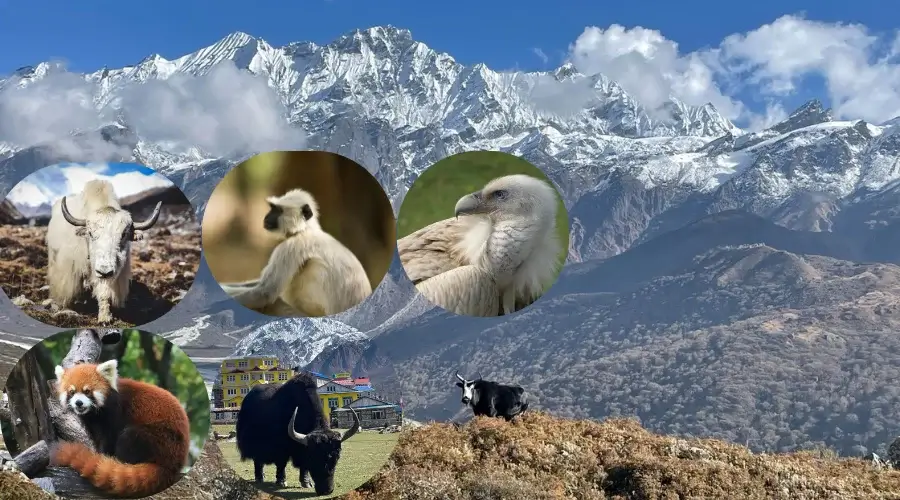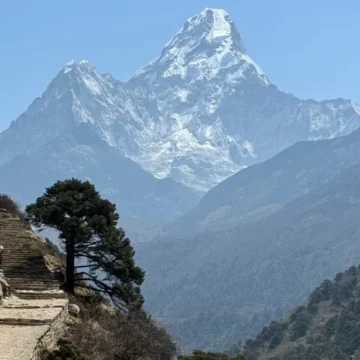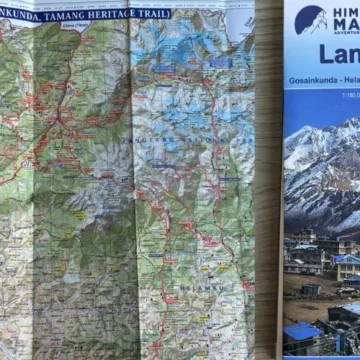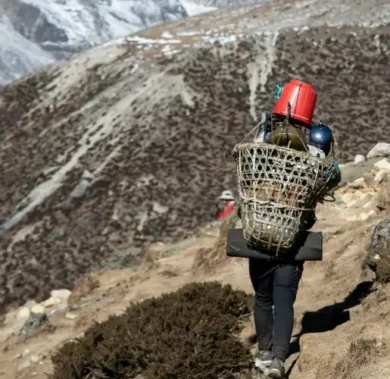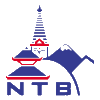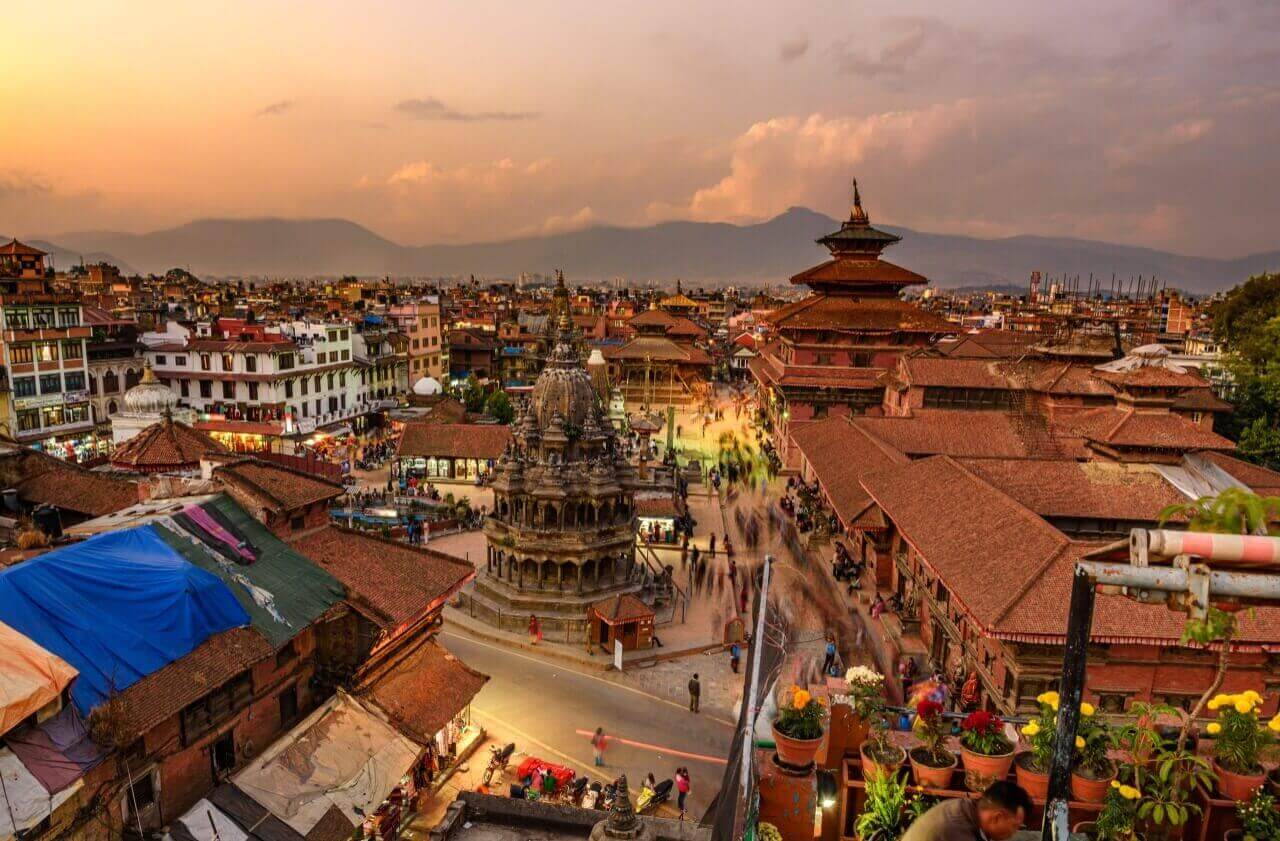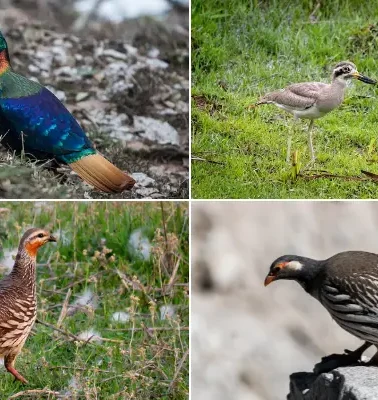
Top Wildlife Species to Spot on the Langtang Valley Trek
Table of Contents
The Langtang Valley Trek is one of the best treks for viewing the majestic mountains and landscapes. But do you know that this trek is equally famous for spotting wildlife species?
The Langtang valley and its population of animals, birds, and plants are within Langtang National Park. Walking through the forests, meadows, and mountains of the Himalayas offers opportunities to observe their unique wildlife in Langtang valley.
If you love nature, photography, or just like spending time outside, Langtang Valley gives an experience you won’t soon forget.
Langtang National Park is home to many species of mammals, including red pandas and snow leopards, and over 250 officially recorded bird species. It also has 4 species of reptiles and 40 species of fish as per Department of National Parks and Wildlife Conservation (LNP).
Some sources like Avibase list up to 479 bird species due to migratory and seasonal variations. This rich biodiversity highlights the park’s ecological importance.
Where can you spot Wildlife in Langtang?
You can see wildlife in Langtang Valley Trek in the forests, along the rivers, and in the alpine valleys protected by the park. The Langtang National Park has a large spread, from subtropical forests below to icy glaciers and rocky heights up top.
Because of its many types of terrain, Langtang is a good place to see numerous animals and birds on your journey.
Trek from Lama Hotel to Langtang Village
You can find a lot of interesting wildlife as you hike from Lama Hotel to Langtang Village. During this part of the walk, you’ll wander through Oak, Rhododendron, Pine and Bamboo forests.
You can find Red Pandas, Musk Deer, Himalayan Black Bears and Gray langurs among these woods. Red pandas avoid humans and can only be spotted at dawn or dusk. Keep silent, and you can see someone come out into the Bamboo Forest if you are truly lucky.
Water Sources and Areas by Water
Animals commonly gather close to the Langtang Khola (river). Trekkers in that area often observe wild Goats, Himalayan Tahrs and Ghorals moving on the rocky slopes near the river. These mountain creatures climb well and often move about in groups.
Kyanjin Gompa and the Valleys Nearby
While passing through Kyanjin Gompa, you will see the landscape spread out and become alpine. Here, it’s common to spot Himalayan Yaks, Blue Sheep (Bharal) and, at times, Snow Leopards, although it’s rare for anyone to see them.
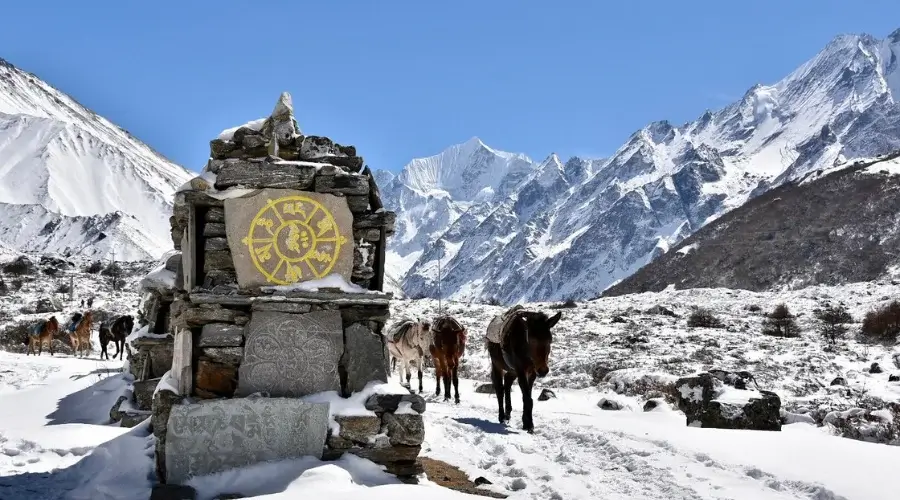
But guides and nature lovers frequently explain encounters with them in the cold winter, as that seems to be when they want a meal.
Birdwatching Along the Trail
There is plenty to see on the trail when it comes to birds. You’ll see and hear birds from the lower forests to the higher ground, like the Himalayan Monal, Blood Pheasants, Woodpeckers, Eagles, Vultures and different forest birds.
Getting up early for birdwatching is the best choice.
Bamboo Village: Home of the Red Panda
Guess what? Bamboo Village is where you can see Red Pandas more easily. Red pandas love living in the bamboo forests that cover this area. Guides often suggest that you be aware and move quietly at this point.

Common Animals Found in Langtang Trek
Langtang National Park is home to many kinds of Himalayan animals. Your trek will take you through thick forests, upland fields, and paths surrounded by wild animals.
When you go trekking in Langtang, you may see these typical animals.
Himalayan Tahr
Himalayan Tahr is a large mountain goat is one of the easier animals to spot in Langtang.
The animal’s strong brown coat and growing curved horns mean it can handle tough, rocky slopes. In many cases, you’ll spot them climbing cliffs that are found close to the riverbank.

Yak
Around the area of Kyanjin Gompa, many domesticated yaks are often found in Langtang. Still, there are wild yaks living in the area as well. The area’s largest and softest animals are significant to locals who use them for both travel and milk.
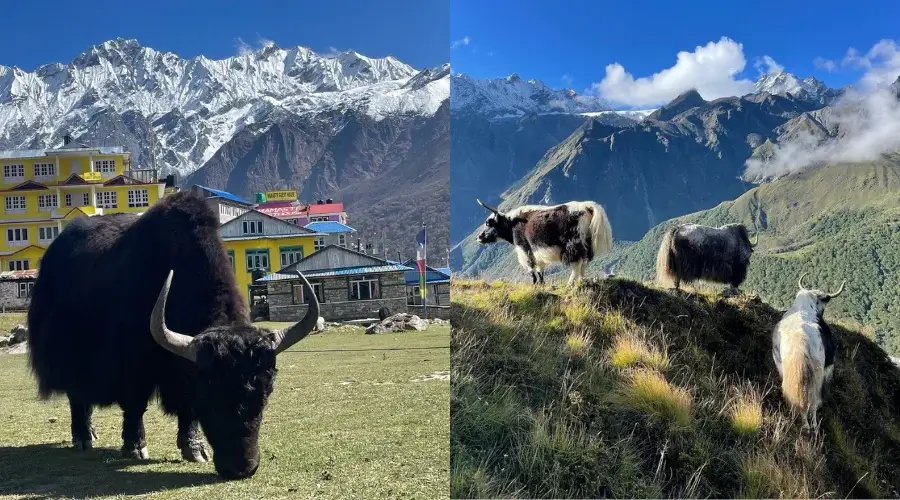
Gray Langur
Gray langurs live in Langtang forests. Black wild monkeys, with long tails and black coloring on their faces, are easy to spot jumping in trees, mainly around Lama Hotel and Bamboo.
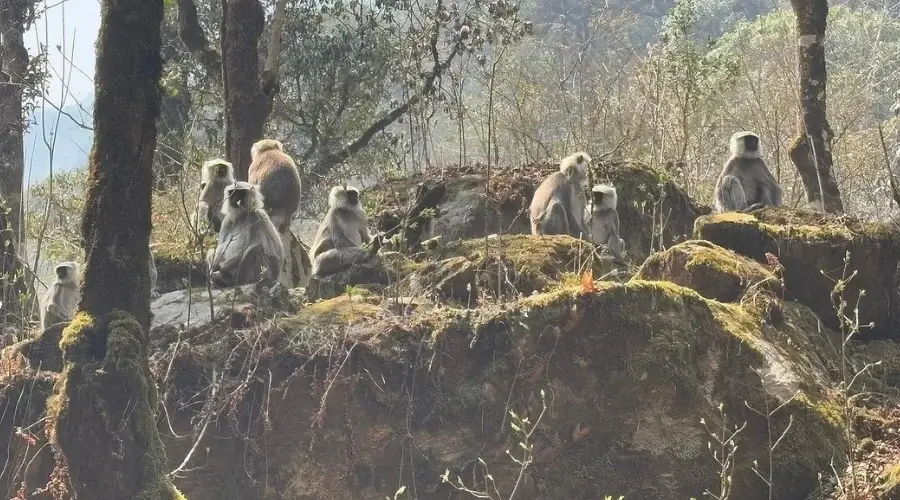
Musk Deer and Goral
Because they are not easy to find, some people spot musk deer only in forest areas where there is little noise. You can spot these near Syabrubesi and Lama Hotel Region.
Himalayan Blacks Bear
Even though they aren’t always easy to find, Himalayan black bears live in forest areas. They tend to be hidden away, appearing only by sunrise and sunset.
Since these animals are native to the area, they are easier to find when trekkers remain silent and treat nature carefully.

Wild Boar
You can also encounter Wild Boar as you start ascending Sherpagaon until you reach Kyanjin Gompa. They are in a huge number; people often find them in nights grazing around the areas.
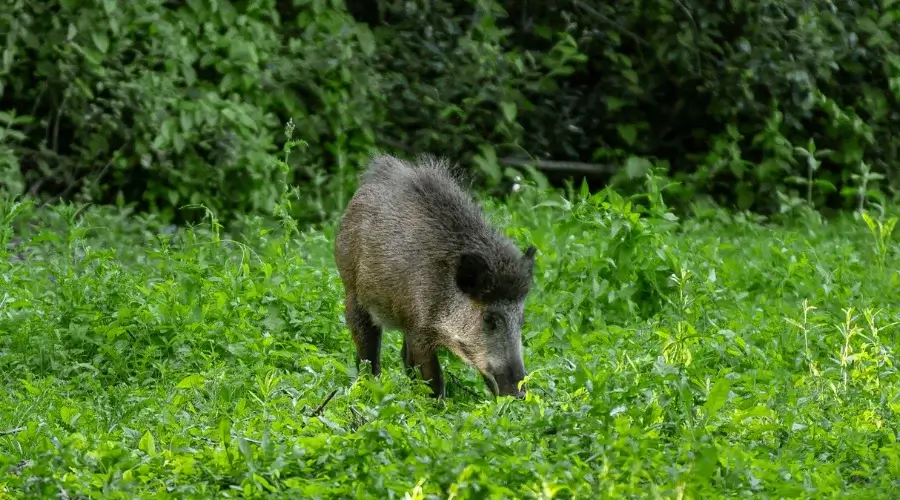
Rare and Endangered Species in the Langtang Region
Langtang protects some of the rarest and most endangered animals, as well as more common species. The trek prevents these animals from being poached and losing their habitat.
Red Panda
Red pandas have been given endangered status and are carefully cared for in Langtang. Locals say the woods between the villages are among the best places to spot them.
Spotting one is a real achievement because they hide, and their environment is becoming less common.
Snow Leopard
Snow leopards are not only very rare in Nepal but also very difficult to find. They survive at high heights and easily catch their food.
It’s unlikely you will spot them during your hike, but they exist higher up in Langtang. Both locals and people who take care of yak’s report having observed them during wintertime.
Himalayan Griffon
Several areas list these large birds as threatened. They are best seen flying above the tops of mountains. With a wingspan reaching 3 meters, they are important in the ecosystem by eating bones and other carcasses.
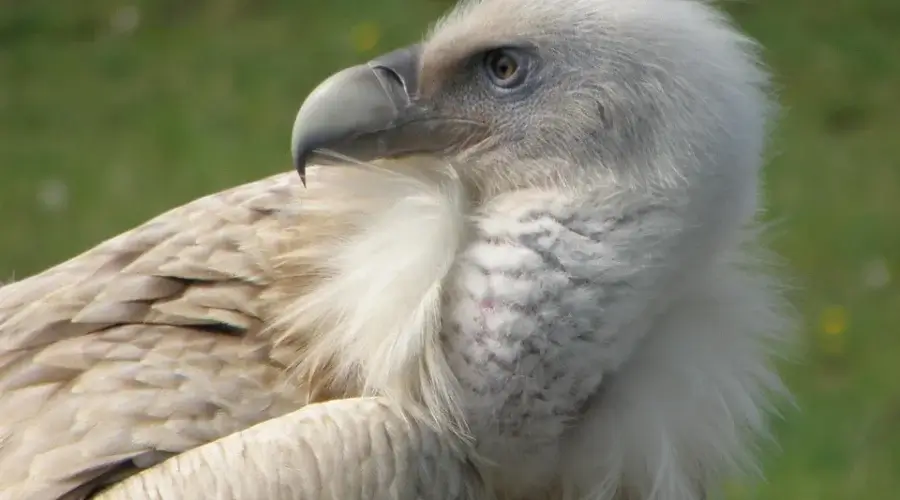
The ecosystem in Langtang is easily harmed, so conservation, anti-poaching duties and wildlife studies are being planned to keep these animals safe.
Bird Watching in Langtang Valley
In addition to its wild animals, Langtang Valley attracts people with its variety of birds. Thick green forests and wide alpine meadows give birdwatchers and photographers plenty of opportunities to observe birds in the region.
The trails in Syabrubesi, Bamboo, Lama Hotel and Langtang Village will take you past many singing birds.
While some birds are colourful, others are most easily identified by the way they call. You can only find many of these plants in the Himalayas, as they don’t exist anywhere else.
Himalayan Monal (Danphe)
The Danphe is Nepal’s national bird and one of its most striking birds. Its body feathers are green, blue, red, and purple. Danphes prefer to stay in groups of few and can often be found in the grass near a forest or on its edges.
Blood Pheasant
Blood pheasants are very shy but still very attractive birds. The higher parts of Langtang, around Kyanjin Gompa, are where you’ll usually spot them. That reddish colour in their feathers is how they get their name.
Himalayan Griffon and Golden Eagle
There are often griffons visible circling near the tops of the sky. Because they have large wings and very clear sight, hawks love to circle in the skies over cliffs when they search for food.
Snow Pigeon or Hill Partridge
Snow pigeons live on the rocks and in high places, but hill partridges are regulars on the forest floors. Birds of both species travel and feed in groups.
Woodpeckers, Warblers and Flycatchers
Woodpeckers, flycatchers and warblers are just a few of the small but colourful birds you may see in the Langtang forests. They flutter in the trees, eating insects and there making tunes. If you want to see them, go out early in the morning.
Most people in Langtang rarely spot them because they are uncommon and usually stay in deep forest areas.
Wildlife Conservation Activities in Langtang National Park
The area belongs to Langtang National Park, which puts great effort into saving wildlife. Authorities in the park strive to prevent poaching and illegal hunting and, as a result, protect animals like the Red Panda and Snow Leopard.
Sustainable practices also include protecting the environment by controlling deforestation and controlling tourism.
At the entry and exit points of Langtang National Park, especially at the main Checkposts, the Nepal Army carefully checks all trekkers’ bags. This is done to ensure that no one is taking anything out of the park, like rare plants, stones, or other natural items.
They also make sure that nothing harmful is being brought into the protected area. If anyone is found carrying illegal items or trying to remove anything from the park, strict action is taken.
The person can be heavily fined or even punished according to the law. These rules are in place to protect the park’s wildlife and natural beaut
Best Time to Spot Wildlife In Langtang Valley Trek
The changing seasons largely control when wildlife can be found in Langtang Valley.
Wildlife enthusiasts and adventure lovers tend to trek in spring (March to May) or autumn (September to November) the most. Because the Langtang weather is mild and there are plenty of resources for food, animals move about much more during these months.
As spring arrives, forests are full of flowers, drawing in several types of birds and insects that help many animals, such as grassland creatures, flourish.
Temperatures are cooler in Autumn, so animals can be found in the daytime because the weather is clear. Depending on the year, it’s often colder in winter from December to February, taking animals to favour places at ground level or sheltered spots to survive the lower temperatures.
June to August is the season for the monsoons, which bring lots of rain, slippery places, and forests full of wildlife, so it is not recommended to trek.
For this reason, visiting in spring or autumn will give you the best time of both trekking and wildlife.
How to Spot Wildlife Without Harming the Environment?
One must follow the rules below to observe the wildlife in Langtang, this way they can contribute without harming the environment.
- Always give animals some space; touching or offering them food is not recommended.
- Keep to the trails to avoid harming both plants and the habitats of animals.
- Avoid being noisy, so you won’t scare the animals around you.
- Bring back all your trash instead of littering it.
- You can look at animals up close using binoculars or zoom lenses, so you do not have to walk closer to them.
- Adhere to the rules and standards created by local officials and those leading tours.
- Don’t use a flash, as it may scare the wildlife.
- Please leave plants, rocks or anything natural you find where they are.
- Stay clear of places where birds are nesting until they are born.
- If you travel with fewer people at once, you will cause less stress on the environment.
Want to know more?
Speak to an Expert





Sandip Dhungana
Nepal 🇳🇵
Whatsapp: +977-9823636377

